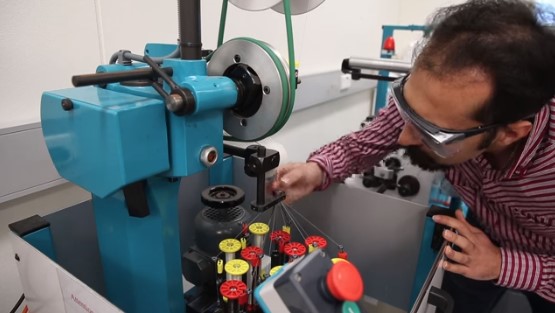News
3D printing bone tissue
Jun 28 2022
The ability to arrange different types of fibres with predetermined spatial organisation gives us the colour, vibrancy and comfort we encounter in traditional textiles.

Replace conventional fibres with those that can conduct electricity and we introduce new dimensions. We introduce the ability to monitor human movement using wearable garments, and even to store the energy required to power such a function. ARC Centre of Excellence for Electromaterials Science (ACES) researchers have created new fibre structures and used traditional knitting and braiding techniques to introduce both of these capabilities to wearable structures.
Wearable Energy Storage
A knitted textile based on the polymeric composite fibres, produced at the Australian National Fabrication Facility, is highly sensitive, stable and able to detect a wide range of human movement.
The team demonstrated a working device with remote sensing capabilities using a knee sleeve prototype of the fabric that ‘talks’ to a commercial wireless receiver.
These fibres are not only stretchable but also conduct electricity. This combination of properties allows the fibres to respond to body movement.
For energy storage the materials that make up a battery have been braided into appropriate arrangements to deliver energy storage capabilities.
Teamwork pays
ACES Director Gordon Wallace said an interdisciplinary approach to the research was crucial to the team’s success.
“These advances are made possible by the combination of skills that ARC Centres of Excellence bring together to tackle challenging areas,” he said.
“We are able to take fundamental advances in materials science and engineering and to realise wearable structures for use in sports training and rehabilitation applications.”
A paper detailing the work, Knitted Strain Sensor Textiles of Highly Conductive All Polymeric Fibers, was recently published in Applied Materials and Interfaces.
3D Braided Yarns to Create Electrochemical Cells – Electrochemistry Communications













